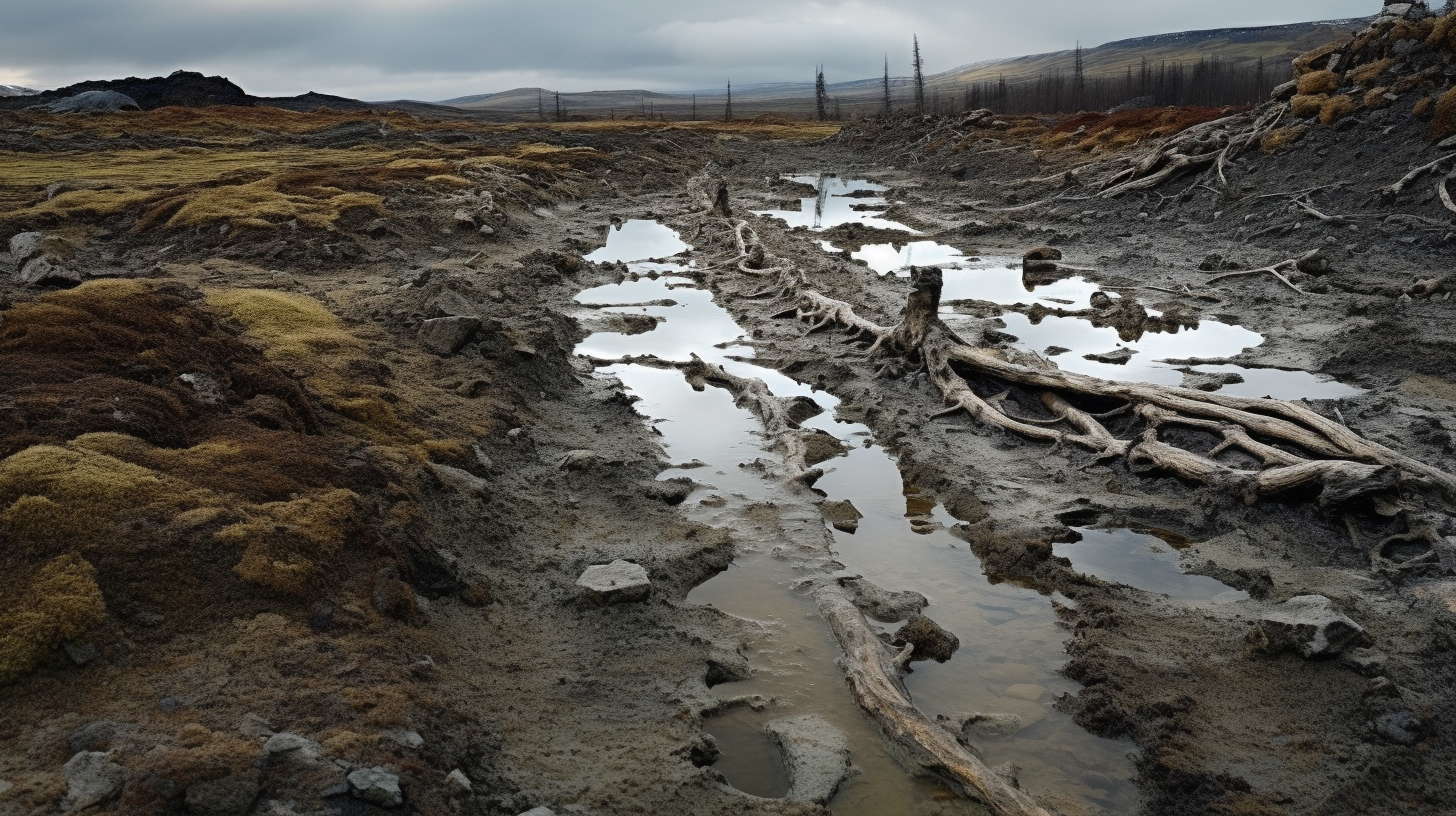The unforgiving Arctic frost, a colossal cradle of ice-bound secrets, is unraveling. Our story plunges into the heart of permafrost’s perils, a topic as chilling as the windswept tundra itself. It is here, beneath the surface, where the awakening ancient pathogens slumbered in their frozen tombs, undisturbed for millennia, until now.
Their resurrection is not heralded by trumpets or fanfare but by the steady drip of thawing ice. As Earth’s fever continues to climb, the permafrost yields to its warmth, waking these dormant diseases from their icy slumber. Researchers stand at the precipice, peering into a Pandora’s box of virological history, while pondering the potential pandemonium these pathogens could unleash.
Decomposing organic matter trapped within layers of ice is now becoming a banquet for bacteria. It is in these ancient feasts that scientists have identified DNA sequences of long-vanished viruses and bacteria. From the ominous Spanish Flu to pathogens with no name—our history’s deadliest hit parade could very well be on the brink of a nightmarish comeback tour.
Despite the morbid curiosity, one cannot deny the gravitas of the situation. The implications are multifaceted: risk of new epidemics, the untold impact on global health, and the necessity for preemptive measures. It goes beyond science; it touches on the existential questions that haunt our era of environmental crisis. Experts, hunched over petri dishes and ice cores, find themselves casting furtive glances behind, worried about what may be lurking just over their shoulders. Questions arise – are we prepared to confront the specters of the past as they surge forth?
Take, for example, the well-documented case of the 2016 Siberian anthrax outbreak, where a heatwave thawed a reindeer carcass buried in permafrost, resulting in a lethal spillover of the bacteria. It’s a stark reminder that our actions—or inactions—have consequences that reach into the depths of time.
Yet, we do not simply dwell on problems but seek solutions as well. Innovative biotechnology is on the rise, with scientists striving to catalogue and understand these microbial entities. By knowing the enemy, we might develop weapons—new vaccines and treatments—to safeguard against this hidden arsenal. Ethical implications swirl in this melting pot: How much intervention is wise? Can we guard against overstepping, from protectors of our present to villains of an unforeseen future?
The stage is set, the actors are ready, and the script is being written in real-time. Ancient humankind had no control over these agents of havoc, but we, with our digital thermometers and CRISPR gene-editing, dare to hope for a different ending to an age-old tale of microbial conquest.
As we look upon these Permafrost Pitfalls, we are faced with a dilemma, a paradox of progress and preservation. To engage or to retreat, that is the question. Our very presence in the Arctic tugs at the strings of the delicate ecological balance, and we must tread with care lest we unravel the fabric of biological safety.
In the end, our tale of frozen peril is not just a cautionary story; it is a clarion call to action. For those that hear it, it is an invitation to embrace the complexities of our planet, to safeguard the knowledge of the past, and to make decisions with the wisdom that only this makes possible. It is a narrative that implores us not to ignore the churning ice, the stirring beasts within the permafrost, for they are irrevocably part of the legacy we will leave for generations to come.
The permafrost’s message is clear: ignore it at your peril, for it harbors more than just ice; it guards the vestiges of epochs past, and its pitfalls could all too easily become our own.
